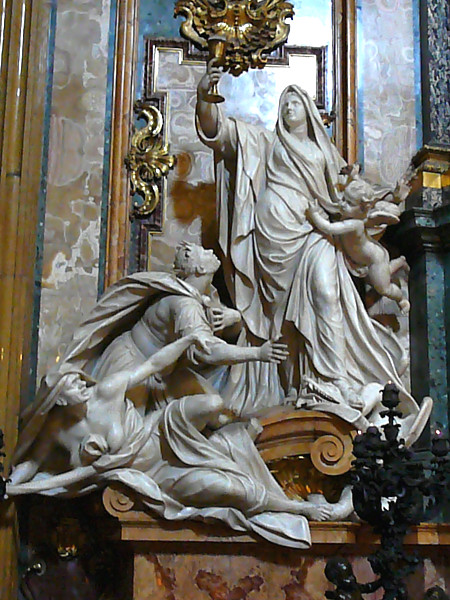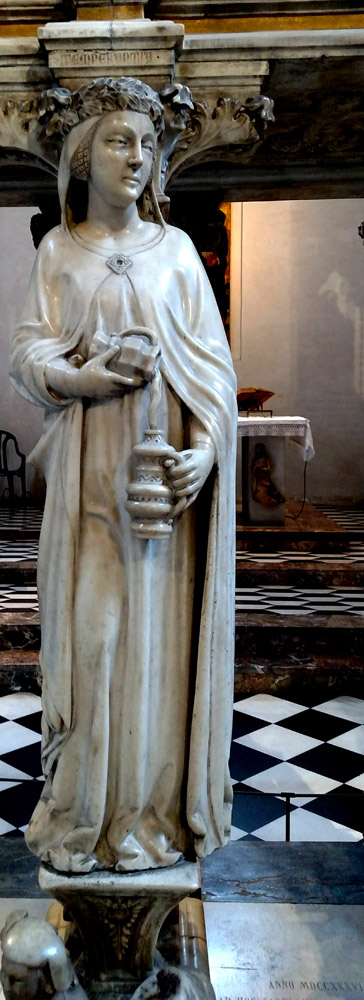The attribute for Faith is a chalice, as in the first picture at right. For Hope it may be an anchor, wings, or flowers. Another important set comprised the "cardinal" virtues of Justice, Prudence, Fortitude, and Temperance. The identifiers most often associated with them are –
- Justice: A pair of scales and often also a sword.
- Temperance: Pouring liquid from a smaller vessel into a larger one (third picture at right).
- Fortitude: Armor or some other military equipment; a lion. Rarely, a broken column.
- Prudence: A mirror, sometimes also a dragon or snakes. Rarely, a pair of calipers.
ARRAYS
Many works arrange the Virtues into an array, such as at the tomb of Peter Martyr, with its life-size figures of the theological and cardinal virtues plus "Obedience," or the three theological virtues along the bottom of Tintoretto's Baptism of Christ. The selection and iconography of the array of virtue figures at Sant'Alvise, Venice, seem intended for the edification of the nuns of the convent attached to that church.
Prepared in 2020 by Richard Stracke, Emeritus Professor of English, Augusta University. Revised 2021-07-01.
HOME PAGE

Faith with her chalice vanquishes idolatry: Andrea Pozzo, 1697-1700. (See the description page.)

Charity with her nurslings in Zadar Cathedral. (See the description page.)

Temperance pouring into a vessel: Detail of the tomb of St. Peter Martyr, 1336-39. (See the description page.)
MORE IMAGES
- Second half of the 14th century: Charity is pictured as chief among the virtues in this fresco celebrating St. Thomas Aquinas.
- 1547-51: Faith with her chalice and Charity with her nurslings in a detail from The Cáceres Altarpiece.
- 1562-63: Tintoretto's grisailles at Madonna dell'Orto of the cardinal virtues and Faith.
- 1620: Charity suckles her child in Heaven in this detail from Peter Candid's Assumption and Coronation of the Virgin Mary.
- 1691: In Pellegrini's Glory of St. Lorenzo Giustiniani the personified theological virtues lift he saint toward Heaven.
NAMES
- The "cardinal" virtues get their name from Latin cardo, "a hinge." The idea is that all other moral virtues "hinge on" these four.
NOTES
1 Murray, s.v. "Virtues and Vices." Also see the Catholic Encyclopedia, s.v. "Virtue" and "Cardinal Virtues."